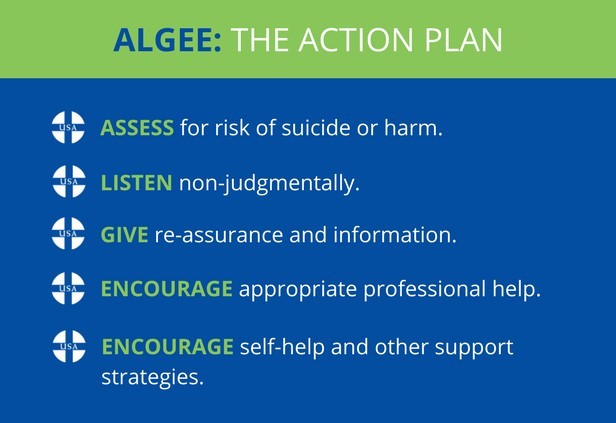 This post is an entry for Part I of the Mentally Healthy resource guide for UP faculty and academic staff working with students who might have mental health concerns.
This post is an entry for Part I of the Mentally Healthy resource guide for UP faculty and academic staff working with students who might have mental health concerns.
“Brett” started the semester well; bright, engaging, asking great questions, and keeping up with all the readings. Midway through the semester, however, things changed. Brett started missing class, and seemed to be paying less attention to personal hygiene. Brett also seemed to pay less attention to the class in general, and in writing assignments gave hints of angst and uncertainty. But in all these ways Brett was only slightly out of step with the rest of the class – student energy always changes mid-semester, students always get busy, and part of college is about angst. Right?
If you find yourself worried about students like Brett, or if you have students with more obvious signs of psychological distress, it’s worth making an effort – both for the sake of the student, and for the sake of doing what you can to create a healthy learning environment for everyone. So what might you do? One short-hand system for responding is to consult, make contact, and refer.
These three tangible action steps come from a Cornell faculty guide Recognizing and Responding to Students in Distress (which is a model for this UP specific guide):
- Consult. Check with other faculty to see what they know about the student, and talk to faculty experienced at dealing with mental health situations. Talk to your department chair or Associate Dean. Check with the student’s academic advisor to see if the student has been on track generally. Check with the Shepard Academic Resource Center (503.943.7895) to see if they’ve been working with the student or have advice. Talk with a counselor at the Health and Counseling Center (503.943.7134) about whether what you are observing merits further action. File an Early Alert or call the Early Alert coordinator (503.943.7709) if you want to make sure the student is on the radar for available services.
- Make contact. If it seems merited after consulting, reach out to the student to see if they are open to talking. Your job here is not to take on anything approximating a counselor role. Instead, making contact is about better understanding what is going on for the student and being able to provide information about resources available to students. Express concern in a positive way; note any observations you’ve made; and make yourself available to listen.
- If you suspect a student may be considering self-harm or suicide, then ask directly. All suicide prevention programs suggest asking direct questions does not give people ideas; instead it is often a relief and provides critical information. If the student indicates they are thinking about self harm, contact the Health and Counseling Center (503.943.7134) and/or Public Safety (503.943.4444) with whatever urgency the situation requires.
- If the student is not actively considering self-harm, then you can….
- Refer. UP provides a good number of resources for student well-being, and helping students be aware of those resources does not mean you think there is anything particularly wrong – it just means you want students to succeed. For mental health counseling the Health and Counseling Center offers short term services that can lead to referrals for longer-term needs. For academic challenges the first stop is usually the Shepard Academic Resource Center – which offers academic counseling and peer mentoring when needed. Students can also benefit from connections with the residential life staff, campus ministry, the office of International Student Services, opportunities to exercise and recreate, opportunities to volunteer and give back, and other of the many student life options available on a small campus. Social isolation is often both and antecedent and consequence of mental health challenges; encouraging students to engage in ways that fit them can be a valuable service in itself.
Beyond this system of consulting, making contact, and referral, there are several public health efforts toward suicide prevention and psychological well-being. These include a wide variety of programs designed to give anyone basic tools to respond to persons in distress. Two that have had some presence on the UP campus in recent years include the ‘Q.P.R.’ program and ‘Mental Health First Aid.’ Each program involves catchy abbreviations that might be helpful as quick guides for responding to students in distress.
Q.P.R. stands for “Question. Persuade. Refer.” with an emphasis on asking people directly if you fear they are at risk of suicide or self-harm. Then persuading people to accept and seek professional help before acting. And then referring people to appropriate resources – including, beyond the resources above, taking advantage of crisis hotlines such as the National Suicide Prevention Lifeline (1.800.273.8255), the Multnomah County Mental Health Crisis Line (503.988.4888), or the Crisis Text Line (Text HOME to 741741).
Mental Health First Aid uses ALGEE as its acronym:

Training in these types of methods are occasionally available at UP, and regularly available in Portland through local county mental health programming – conveniently listed for the Portland area at gettrainedtohelp.com.
Featured Image: Photo by Dmitry Ratushny on Unsplash
